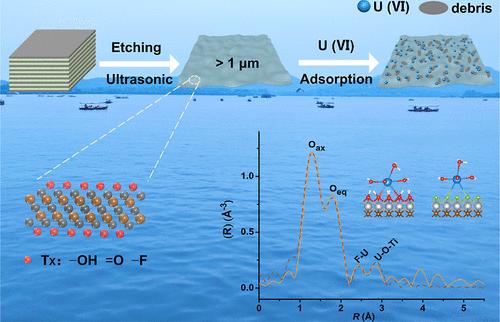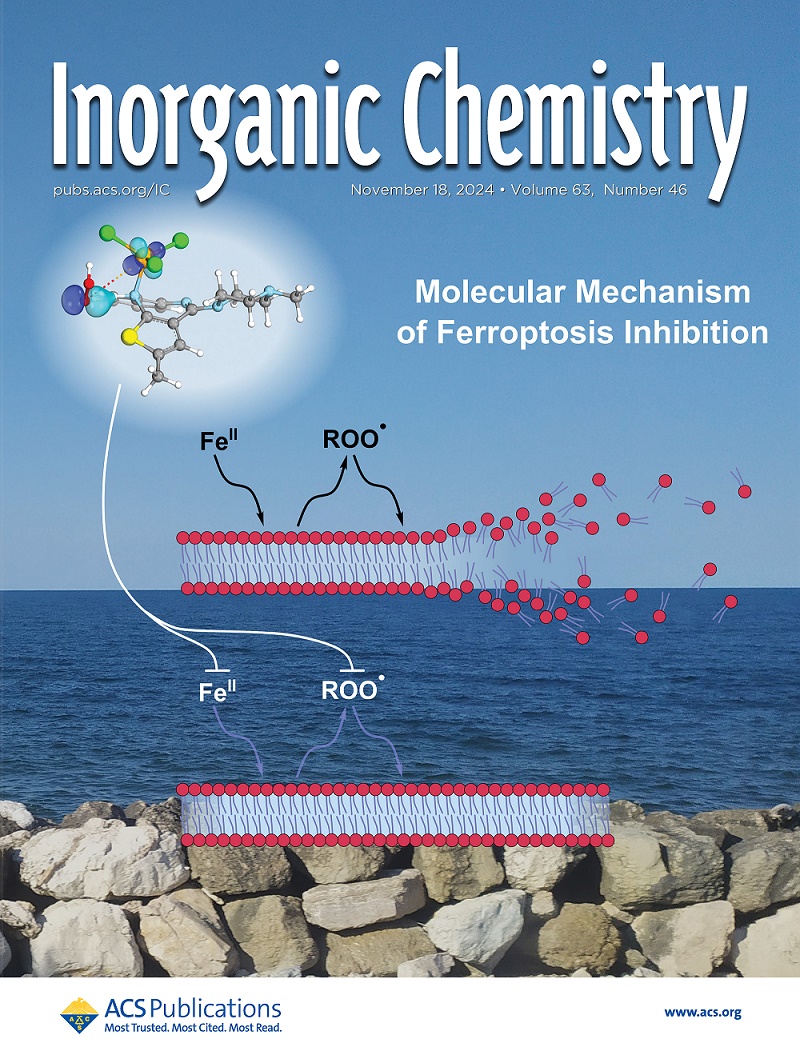Experimental and Computational Study on U(VI) Sorption Mechanisms of Single-Layered Ti3C2TX Nanosheets
IF 4.3
2区 化学
Q1 CHEMISTRY, INORGANIC & NUCLEAR
引用次数: 0
Abstract
Environmental contamination by U(VI) from radioactive wastewater has become a challenging concern in the development of nuclear energy. A highly efficient recovery of U(VI) from wastewater is essential for environmental remediation and can mitigate the depletion of conventional uranium resources. This study describes the synthesis of single-layered Ti3C2TX nanosheets by chemical exfoliation using ultrasonography. The single-layered structure promoted a high sorption capacity of 3.20 mmol/g for U(VI) (distribution constant Kd > 104 mL/g) and excellent selectivity in mine wastewater that contained numerous coexisting ions. Fragmentation of the Ti3C2TX nanosheets from micron-scale to nanoscale upon uranyl sorption was detected by small-angle X-ray scattering and transmission electron microscopy. Extended X-ray absorption fine structure spectroscopy, X-ray photoelectron spectroscopy, and density functional theory calculations demonstrated that uranyl groups coordinated with the terminal −OH and −F on the surface of the Ti3C2TX nanosheets. These findings provide imperative insights into the design and application of nanomaterials to effectively treat uranium-contaminated wastewater.

求助全文
约1分钟内获得全文
求助全文
来源期刊

Inorganic Chemistry
化学-无机化学与核化学
CiteScore
7.60
自引率
13.00%
发文量
1960
审稿时长
1.9 months
期刊介绍:
Inorganic Chemistry publishes fundamental studies in all phases of inorganic chemistry. Coverage includes experimental and theoretical reports on quantitative studies of structure and thermodynamics, kinetics, mechanisms of inorganic reactions, bioinorganic chemistry, and relevant aspects of organometallic chemistry, solid-state phenomena, and chemical bonding theory. Emphasis is placed on the synthesis, structure, thermodynamics, reactivity, spectroscopy, and bonding properties of significant new and known compounds.
 求助内容:
求助内容: 应助结果提醒方式:
应助结果提醒方式:


